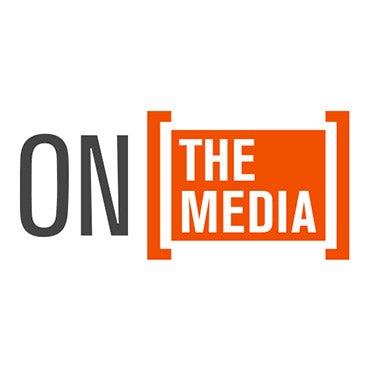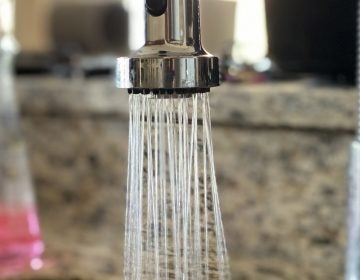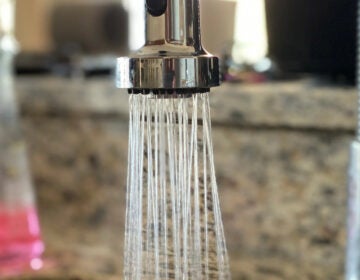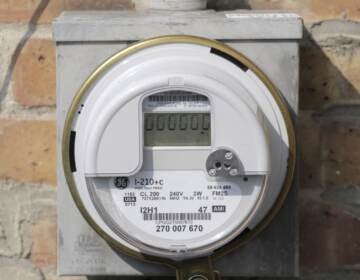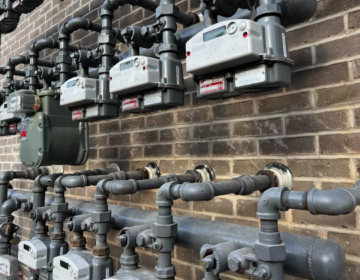Philly water bills will rise in September. But more people are getting automatically enrolled in a discount program
Tens of thousands of Philly water customers could be automatically enrolled in a discount program this year, while others may see their bills go up.
Listen 1:10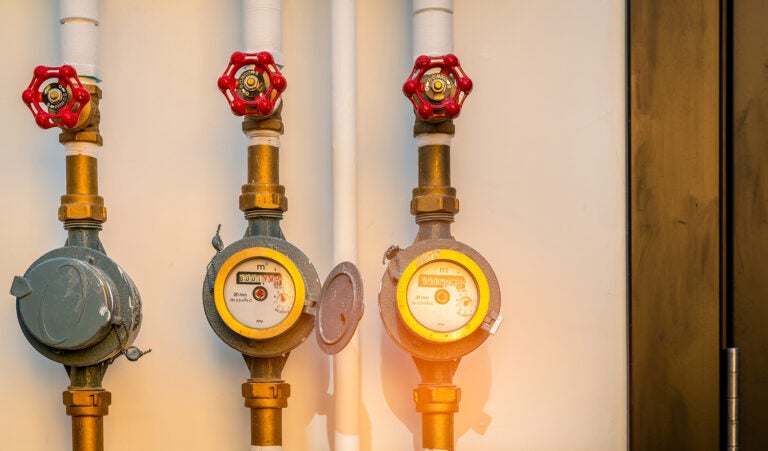
Water meters. (Fahroni/BigStock)
Have a question about Philly’s neighborhoods or the systems that shape them? PlanPhilly reporters want to hear from you! Ask us a question or send us a story idea you think we should cover.
Most Philly residents will experience close to a $5 monthly bump on their water bill this fall.
The charge, proposed by the Water Department this month, would cover the costs of a projected expansion of an under-enrolled Tiered Assistance Program that supports customers struggling to pay their bills.
“The number of people enrolled in [the Tiered Assistance Program] is finally getting up to where it was meant to be,” said Water Department spokesperson Brian Rademaekers. “But that sort of comes with a cost.”
The expansion and associated costs are a result of the Water Department switching to an auto-enrollment system earlier this year, which the utility estimates could lower monthly bills for tens of thousands of customers.
Expanding an under-enrolled discount program
From September to December, on average, around 21,000 Philadelphians participated in TAP each month, far fewer than the roughly 60,000 the Water Department once estimated were eligible.
The Tiered Assistance Program caps monthly water bills at 2% to 4% of a household’s income.
Families earning up to 150% of the federal poverty level — for example, $46,800 for a family of four or $22,590 for an individual— as well as people who usually make more but are facing a special hardship such as a health emergency, childbirth, or domestic violence are eligible.
Click here to apply for the Tiered Assistance Program and other Philly water bill discount programs.
After TAP launched in 2017, a burdensome application process — requiring residency and income documentation and, at one point, yearly re-enrollment — kept total participation relatively static.
PWD says current bill rates reflect an average of 17,000 enrollees each month, but participation has often been lower, at just over 14,700 enrollees at the end of 2022. That year, more than 9,000 customers defaulted out of the program, many because they did not respond to the recertification request in a timely manner. Close to 7,000 applications for the program that year were denied — often because people failed to submit valid income or residency documentation.
The low participation rate meant many people who qualified for the program instead paid standard bills — which include a surcharge covering the program’s cost.
“You end up with this situation where you have poor folks subsidizing other poor folks,” said Manny P. Teodoro, a professor of public affairs at the University of Wisconsin-Madison who studies utility management and affordability, and consults with governments on policy issues. “Through the first five years of the program, far more low-income families were not enrolled than were enrolled, which means that the program accidentally made life worse — made water and sewer less affordable — for far more low-income people than it helped.”
PWD was aware of the program’s hurdles. The utility simplified the documentation requirements and lengthened the time participants can stay in the program before they need to prove they’re still eligible.
“When you’re struggling to pay bills, it’s really hard to get all your paperwork together, fill out forms,” Rademaekers said. “You’re already stretched thin, so asking you to go through these extra hoops is a lot when you’re stressed out.”
The biggest change came this February, when PWD switched to an autoenrollment system. The Water Revenue Bureau now uses data from state and federal assistance programs to check customers’ eligibility and automatically enroll those who qualify.
Within a month, enrollment went up by over 25,000 customers. PWD expects average monthly TAP enrollment to reach close to 56,000 customers by September.
Teodoro said this new process is the “gold standard” for reducing the administrative burden of participating in assistance programs.
“What you’re really trying to do … is reduce the number of forms and office visits and processes that people have to go through to get their benefits,” he said. “So the auto enrollment is a really good thing.”
Programs like TAP that help Philadelphians afford their utility bills are good for community stability, Rademaekers said.
“You don’t want people on your block being shut off from water, getting a lien on their house, having collection agencies coming after them because they can’t pay for water,” Rademaekers said. “It’s really about cohesion in the neighborhood, making sure that our communities are strong and safe. And in order to do that, you have to take care of people who are struggling and make sure they have clean water.”
$4.43 more on the typical monthly bill
PWD argues it needs to charge non-TAP customers more to cover what the utility projects will be a steep increase in automatic TAP participation.
“We’re trying to help as many people as we can while keeping water affordable for everyone else,” Rademaekers said.
Starting September 1, the utility proposes raising the bill charge that subsidizes the TAP program discounts — known as the TAP-R surcharge. The typical non-TAP residential bill would rise $4.43 a month, or close to 6%. The typical bill for a customer receiving the senior citizen discount would rise by $2.21, or close to 5%.
This increased charge would not affect customers enrolled in TAP, since their bills are determined as a percent of their income. But the increase could affect low-income customers who pay for utilities through their rent, Teodoro said.
“That is a non-trivial rate increase for people who aren’t enrolled,” he said.
The TAP-R surcharge increase would be in addition to the base rate increase that the Water, Sewer and Storm Water Rate Board already approved to begin September 1. Together, the base rate and TAP-R surcharge increases would raise the typical residential bill by more than $10. Base rates also rose this past September by close to 8% for the typical residential customer.
Customers can comment on the proposed surcharge increase at a public hearing on May 10 at 10 a.m., before the Water, Sewer & Storm Water Rate Board. They can also submit written comments by email or mail.

Get daily updates from WHYY News!
WHYY is your source for fact-based, in-depth journalism and information. As a nonprofit organization, we rely on financial support from readers like you. Please give today.
